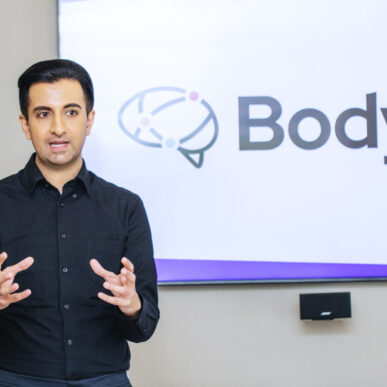What’s your main weakness?” Many of us have faced this question in job interviews, a moment when the interviewer wants to see our vulnerable side and ability to be self-aware. Instead, we try to turn our flaws into potential strengths. “I’m a perfectionist,” we might answer, hoping to impress with our attention to detail and high standards. But is that really the case? Or are we merely masking the deeper psychological complexities of perfectionism?
The Psychological Toll
Perfectionism is often lauded as a desirable trait – a sign of dedication and commitment to excellence. But beneath the surface lies a darker reality. True perfectionism isn’t just about setting high standards; it’s about an unrelenting fear of failure, an insatiable need for validation, and a constant sense of inadequacy.
While perfectionism may seem like a badge of honour, its psychological toll can be profound. The relentless pursuit of flawlessness can lead to heightened anxiety, imposter syndrome, chronic stress, and even depression. Every mistake becomes a personal failure, every imperfection a source of shame.
And yet, paradoxically, perfectionists often struggle to take risks and innovate, fearing the consequences of falling short. They focus only on areas where they know they can excel and shy away from unfamiliar challenges and opportunities for growth. This risk aversion stifles creativity and personal development, as perfectionists prioritise avoiding mistakes over taking risks and exploring new possibilities.
The Perfectionism-Burnout Connection
Burnout is a psychosocial syndrome associated with emotional exhaustion, a sense of detachment, and a reduced sense of accomplishment. Perfectionism often exacerbates these symptoms, making it harder to manage workload and navigate the demands of modern life.
Research by Hill and Curran (2015) highlights the negative impact of perfectionism on burnout and its core symptoms. Perfectionists are more likely to experience emotional exhaustion due to their excessively high standards and relentless drive for perfection. Perfectionists may struggle to delegate tasks, prioritise responsibilities, and set boundaries, leading to a higher volume of tasks and increased stress levels.
The Illusion of Success
Perfectionists excel in environments where clear criteria and predictable outcomes, such as standardised tests or academic examinations, measure success. They thrive on the certainty of knowing exactly what will be assessed and how to ace it. However, the real world is far from predictable. In the workplace, performance reviews are subjective, and the value of work is often ambiguous. Perfectionists, terrified of failure and eager to avoid flaws or defects, struggle to navigate this uncertainty and may fall short of their potential.
Breaking Free from Perfectionism
Organisational psychologist Adam Grant has years of work and insight into the perfectionism phenomena and has hosted many podcasts and talks on the subject. Here are four ways he recommends to start taming your perfectionism demons:
Step 1: Redefine Excellence
Recognise that excellence does not require perfection. Aim high, but understand that progress, not perfection, is the key to success. When setting goals, focus on what needs to be done to achieve them rather than fixating on flawless outcomes. When our son was taking his school and college exams, he often became anxious if he felt he wasn’t going to get a good grade. We helped him reframe his expectations by getting him to focus on what he needed to get to the next stage (A Levels, university, apprenticeships, first job, etc). Changing the goal to what would get him over the next hurdle rather than what he felt was expected dramatically improved his confidence and mental health.
Step 2: Progress, Not Perfection
Shift your focus from maintaining a perfect image to working toward mastery. Measure your excellence in progress toward your goals rather than flawless performance and avoid the trap of constantly comparing yourself to an unattainable standard. Celebrate your achievements and improvements, no matter how small, and acknowledge areas for growth without self-criticism.
Step 3: Seek Feedback
Create a support system of trusted colleagues or mentors who share your standards. Solicit feedback from these trusted judges to evaluate your work objectively with a focus on effort rather than outcome. It’s important that you aim for constructive criticism and use it as a tool for improvement rather than a source of validation. Someone telling you ‘It’s great’ isn’t helpful feedback. Why is it great? What have you done to make it great?
Step 4: Focus on Incremental Improvement
Avoid overwhelming yourself with excessive feedback and criticism. Instead, identify a few specific areas for improvement each day. Set realistic goals for growth and focus on making incremental progress. By breaking down your goals into manageable tasks, you can avoid feeling overwhelmed and stay motivated to continue improving.
Embracing Imperfection
So, where does this leave us? Perfectionism may promise success, but it often leads to burnout, limited creativity, and missed opportunities for growth. True excellence is found not in flawlessness but in our ability to embrace imperfection and forge our own path. So, the next time you find yourself striving for perfection, remember success is not about avoiding mistakes but about learning from them. Progress, not perfection.




















